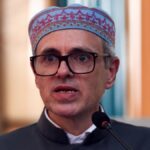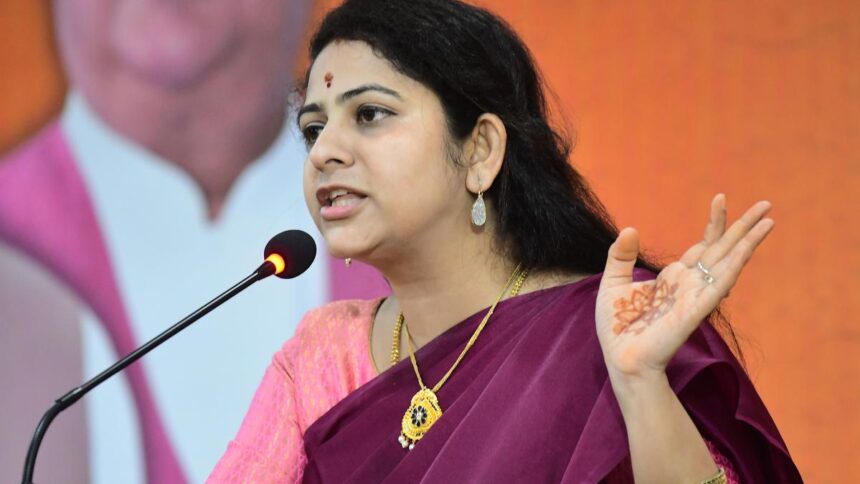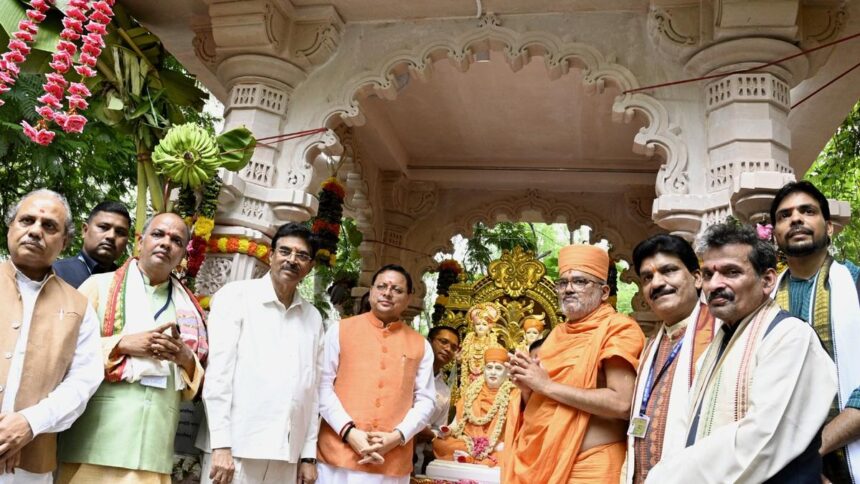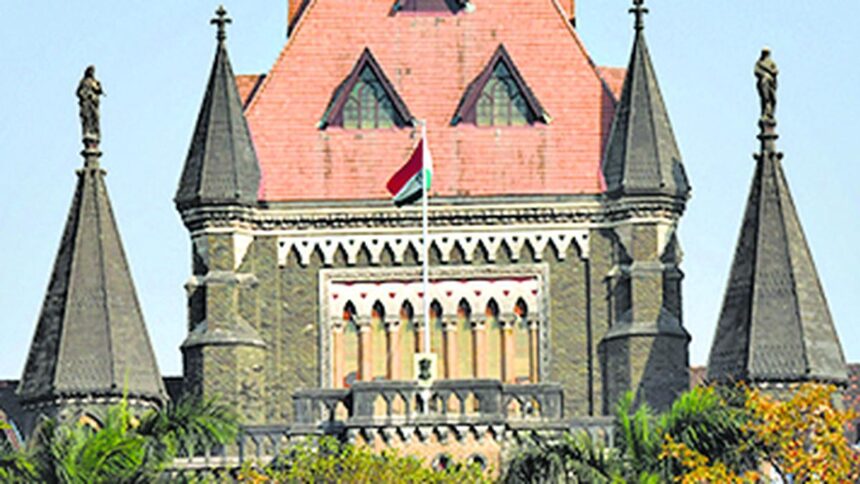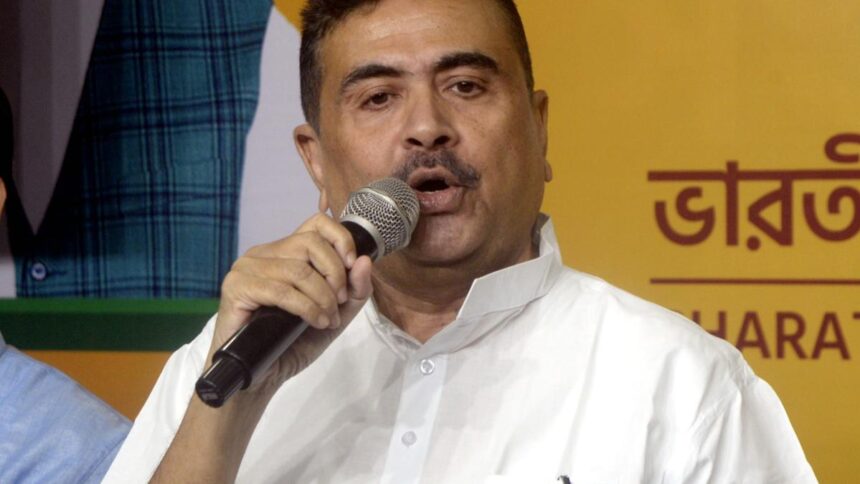Sangita Devi, 42, is hot and thirsty. She has walked over 2 kilometres in the scorching heat, in a protest she hopes will yield results. Fellow walkers ask her to take a sip of water: “Let’s finish the march; then I will drink and eat,” says Devi, who walks for her son’s education.
Uttar Pradesh, India’s most populous State with a population of over 200 million people, has witnessed many such demonstrations in the past month. On June 16, the Basic Education Department initiated the process of what it described as a “pairing” of over 10,000 government primary and upper primary schools that had a low enrolment across the State.
The protesters argue that the government’s move will force students to travel longer distances in difficult geographical areas. Devi is hopeful of a reversal after she heard from a relative residing in Sahpurva village in Lucknow district about the cancellation of the merger.
There are over 1.3 lakh government-run primary (up to Class 5), upper primary (Classes 5-8), and composite schools (Classes 1-8) in Uttar Pradesh. During the 2023-24 academic year, over 1.67 crore students were enrolled in them.
Devi is determined to send her son to school even if the decision doesn’t change. “I will pick and drop him on foot,” she says, adding, “I have seen the importance of education. My nephew is earning over ₹30,000 per month after completing an Industrial Training Institute (ITI) course. He has constructed a two-storey house after saving for five years.”
The Samajwadi Party (SP) workers protests in Lucknow over the school merger/pairing decision of U.P. government.
| Photo Credit:
Mayank Kumar
She looks towards her own house, a temporary thatched structure. Devi is a daily wage labourer with irregular work, earning ₹400 a day. “I am not paid my daily wage on time,” she says, adding that she has no ancestral land, and life is a struggle. Some day, when her son is educated, she hopes to have a pucca house of three rooms.
In and out of school
“My nephew’s school in Sahpurva was merged with the primary school in Paharpur village,” says Virendra, 24. Sahpurva villagers stopped sending their children to the new school in Paharpur, because it was a little over 1 km away and the road connecting the villages was busy, he says. “Attendance dipped after the merger. No one wants to risk their children’s lives. We are farm labourers and cannot afford to drop and pick them up daily. We don’t have vehicles to do this,” he adds.
He says he has heard that the Sahpurva school will be reopened soon, but he is unsure. The Basic Education Department issued a detailed clarification on July 31, saying that no school has been permanently paired.
“If student numbers rise or seating becomes inadequate, classes will resume in the original buildings. Complaints from certain districts regarding the initiative have been taken seriously, and necessary action has been taken, including restoring operations in certain schools where required,” says Sandeep Singh, Minister for Primary Education. The department further stated that the distance between paired primary schools will not exceed 1 km for primary and 3 km for upper primary schools.

The Lucknow Bench of the Allahabad High Court, on July 25, ordered a status quo on the merger of primary schools in Sitapur district after it noticed discrepancies in documents presented earlier with respect to the merger of schools.
Ankur Kumar, 12, from Chaudarva village in Amethi, now has to travel to Pathan village primary school, passing through a forest area. “I want to study. I hope to earn a stable income and go up socially. My father drops me off on foot daily,” he says. They don’t have enough money for him to go to a private school. Government schools are free of cost up to Class 10; privately-owned and run schools in villages could cost anywhere from ₹300-2,000 per month.
The threat of school closure has frightened Kanhaiya Lal, 41, a daily wage labourer from Bari Khas village in Azamgarh district. “I heard the school will be closed. It will be a devastating blow as I can’t afford private school for my son. He is now in Class 4. For daily wage labourers, anything more than meals twice a day is out of reach. Free education was a major help,” says Lal, who is from one of the Scheduled Caste (SC) communities. The villagers are planning a protest if the merger happens.
Uttar Pradesh Primary Teachers’ union staging a sit-in at the Basic Education Department office in Lucknow.
| Photo Credit:
Mayank Kumar
For girl children, most villagers say, it is doubly difficult, because safety is an issue. In June 2024, Uttar Pradesh had registered the highest number of complaints with the National Commission for Women.
The ‘merger’ debate
The merger initiative has faced a similar backlash from political parties that are critical of the Bharatiya Janata Party in power, both at the Centre and in Uttar Pradesh.
“The merger is a planned design to keep the poor away from education. The project is leading to increasing travel distance, potentially leading to higher dropout rates,” says Anil Yadav, a senior Congress leader who is involved in demonstrations against the merger.
He adds that it is mainly those from SC, Scheduled Tribe (ST), and other marginalised communities who send their children to government schools. Children between 6 and 14 years will be impacted the most, with the highest number being girls, he adds.

He dismisses the temporary closure clause, saying that any modification “will derail the overall education system in U.P.”, a State that faces “a lack of quality teachers and learning gaps among primary school students”.
The Annual Status of Education Report (ASER), an India-wide survey by the education-focused non-profit Pratham, found in 2024 that in U.P., only 27.9% of government-school children in Class 3 could read a Class 2 text, and only 31.6% could do subtraction sums. In Class 5, only 50.5% of government school children could read a Class 2 level text, and 31.8% could divide. Uttar Pradesh, the report records, has seen an overall betterment of education, and teachers worry that this school merger will set children back.
The school pairing initiative is based on the National Education Policy-2020 recommendations that push for integrating small schools with better-equipped institutions in the vicinity. A letter from the Ministry of Education dated June 5, 2024, stated that merging schools with fewer than 50 students can significantly improve the learning environment and educational quality. Following this, in a meeting chaired by the Director General of School Education on October 23, 2024, districts were directed to prioritise the review and merger of low-enrolment schools.
The Minister says, “In schools with very low enrolment, students often miss out on essential experiences such as classroom interaction, peer learning, group activities, games, and project-based tasks. Integrating these students into adequately enrolled schools provides them with a complete educational atmosphere.” He says this gives the government the chance to invest more in schools, with smart classes, information and communication technology labs, and sports equipment.
Privatisation push
The vacant school buildings will house balvatikas (play schools) and anganwadi centres. “This will be a meaningful step towards strengthening pre-primary education and preparing children mentally for Grade 1,” says Singh.
Adarsh M. Saji, the newly elected president of the Students’ Federation of India (SFI), feels differently. He ascribes a “privatisation agenda” to the mergers and says the government is “asserting its stand” that “the marginalised and oppressed are outside of their priority”.
He says, “In the last four years alone, over 89,000 schools have been shut down across India. The BJP-ruled States like Madhya Pradesh top the list in school closures, followed by Uttar Pradesh and Gujarat.”

This, he feels, is a setback to the Right to Education, which became a Fundamental Right in 2002, offering free education to every child between 6 and 14 years. He participated in a protest march in the Sultanpur district.
The plan of ‘merging’ schools comes from Sustainable Action for Transforming Human Capital in Education (SATH-E), a project launched by NITI Aayog in 2017, calling for targeted interventions in capacity building, school consolidation, and systematic reforms.
It pushed for reorganising and consolidating schools into larger schools. Implemented in three States – Jharkhand, Odisha and Madhya Pradesh – the project led to the merger of over 8,000 schools, which it described as “sub-scale schools” with larger schools.
Sub-scale schools are educational institutions with fewer than 50 students and often suffer from a host of challenges, including the lack of teachers, leading to multi-grade teaching, a lack of subject-specific expertise, and poor infrastructure. Some may not even have playgrounds or boundary walls.
Vacancies and unemployment
Some teachers’ unions are up in arms against the merger, fearing post cuts. They held protests across Uttar Pradesh, but the government’s assurance last week that there are no job cuts on the cards has given them hope.
“We are already pressured, as teachers are made to do multiple other government activities other than teaching. But yes, we were alarmed,” says Jitendra Yadav, a teachers’ union leader associated with the Uttar Pradesh Prathmik Shikshak Sangh.

A 2018 report by the National Institute of Educational Planning and Administration (NIEPA), a government body, points out that only 19% of a teacher’s annual school working hours are spent on teaching activities.
The remaining time is spent on non-teaching duties like data collection, election duties, mid-day meal distribution, and administrative processes like transfers and reviewing leave applications.
Prospective teachers in U.P. are also agitated, claiming the merger has brought into the limelight the government’s failure to provide employment. “Over the last seven years in U.P., not a single job vacancy for primary teachers has been advertised. The last vacancy came up in 2018. Many young people completing teaching degrees are waiting for job opportunities,” says Abhishek Tiwari, a Sitapur-based State president of BTC/DEIEd Sayukt Prasikshu Morcha, Uttar Pradesh.
The Basic Training Certificate (BTC) and Diploma in Elementary Education (DEIEd) qualify a person to teach primary school students.
NITI Aayog’s 2023 report had noted that there were 2.1 lakh teaching positions vacant in U.P.’s government schools. Aspirants claim that even the advertised vacancies in U.P. face court cases for years, leading to delayed appointments. “We saw this with the 2018 advertisement,” says Tiwari, adding that people waste both their youth and their parents’ money trying to get jobs.
mayank.kumar@thehindu.co.in







